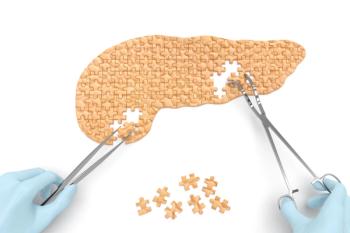
Patient Preferences, Odds of Reading Educational Cancer Materials
Researchers addressed patients’ preferences for the delivery method of educational cancer resources as well as the demographics that were influenced to read materials or not.
Although there was an association in patients’ age, race, education, and odds to read educational cancer information, most patients preferred the use of a socially assistive robot (SAR) to deliver the educational materials, according to a poster presented at ASCO 2024, the annual meeting of the American Society of Clinical Oncology.1
“Health literacy is an important aspect of navigating cancer care. There are over 18 million cancer survivors currently in the US, and the number is expected to continue increasing. As new therapeutic options emerge for cancer patients, it is important that patients are able to read and understand literature from their clinical encounters regarding their treatment options and prognosis,” the authors wrote.1
READ MORE:
The aim of the study was to characterize the associations between specific demographics and their willingness to read online materials regarding cancer education.
In another study presented at the meeting, researchers analyzed patients’ preferences in the delivery methods for similar educational cancer materials. Those preferences were identified using either a SAR or through a physical, paper-based brochure for patients to take home.
“While traditionally provided on paper, electronic methods are becoming increasingly common,” the authors wrote.2
Characteristics Associated with Reading Educational Materials
Among 2903 study participants, 65% read the online materials, with women accounting for a majority of the population. Of those who read the materials, 70% were women and of those who did not, 70.98% were women.
Researchers found a higher proportion of adults 40 years or younger in the “not read” category compared with adults of the same age in the “read” category. They also found 38% lower odds for patients 80 years or older to read the materials relative to patients 40 to 60 years old.
“Education was a significant predictor, with 36% reduced odds for patients with a high school diploma or less, but 26% higher odds for graduates relative to patients with some college education,” wrote the authors.1
Furthermore identifying patient education and their odds to read the materials, researchers found that 27.2% of patients with a graduate degree were in the “read” category and just 19.74% were in the “not read” category.
Finally, White patients were 27% more likely to read the materials than non-White patients.
“This study showed an association between age, race, educational status and odds of reading online cancer health education among cancer survivors. Given the focus on patient-centered cancer care and equity in physician-patient cancer communication, it is important that clinical providers recognize factors associated with reading of cancer education materials in their patient population,” concluded the authors.1
Patient Preferences in the Delivery Method of Educational Materials
In the second study, 129 participants were separated into 2 study arms: Arm 1 (n=64) where participants were given a brochure followed by information from the SAR, while Arm 2 (n=65) participants were given the SAR first and a brochure after.
With similar educational materials provided in both delivery methods, participants were given questionnaires to assess their preferences. Unlike the previous study, demographics did not play a role in patient preference for delivery method.
“Brochure was judged to be ‘very effective’ by 50% in Arm 1 (brochure first) and 63% in Arm 2 (brochure second). SAR was judged to be ‘very effective’ by 60% in Arm 1 and 60% in Arm 2. Composite rates of ‘effective’ or ‘very effective’ were 97% for brochure and 88% for SAR,” the authors wrote.2
On the other hand, 27% of Arm 1 and 17% of Arm 2 preferred the brochure, while 39% of Arm 1 and 42% of Arm 2 preferred the SAR. A majority of patients preferred education from the SAR for its ability to explain the materials and preferred the brochure to take home for future reference.
When asked if their experience with the SAR was enjoyable, 47% strongly agreed, 41% agreed, 11% were neutral, and 1% disagreed.
“[Patients] reported no significant difference in effectiveness of obtaining education information via a standard paper brochure or from a [SAR]. However, they preferred to receive that information from the [SAR], or in combination with the paper brochure to take home. [A] significant majority of them (88%) enjoyed the [SAR] experience during their visit,” concluded the authors.2
With significant demographical associations as well as a preference for online cancer education, researchers of both studies concluded that educating patients with cancer on their treatment options, prognoses, and more must be executed using specific methods that ensure the full retention of materials.
READ MORE:
Pharmacy practice is always changing. Stay ahead of the curve: Sign up for our
References
1. White MC, Bhardwaj A, Christman A, et al. Sociodemographic characteristics associated with reading online health education materials among patients with cancer.Presented at: ASCO 2024; May 30-June 3; Chicago, Il.
2. Dvorak T, Skinner L, Valentin L, et al. Examining patient preferences in the delivery of healthcare education. Presented at: ASCO 2024; May 30-June 3; Chicago, Il.
Newsletter
Pharmacy practice is always changing. Stay ahead of the curve with the Drug Topics newsletter and get the latest drug information, industry trends, and patient care tips.













































































































































